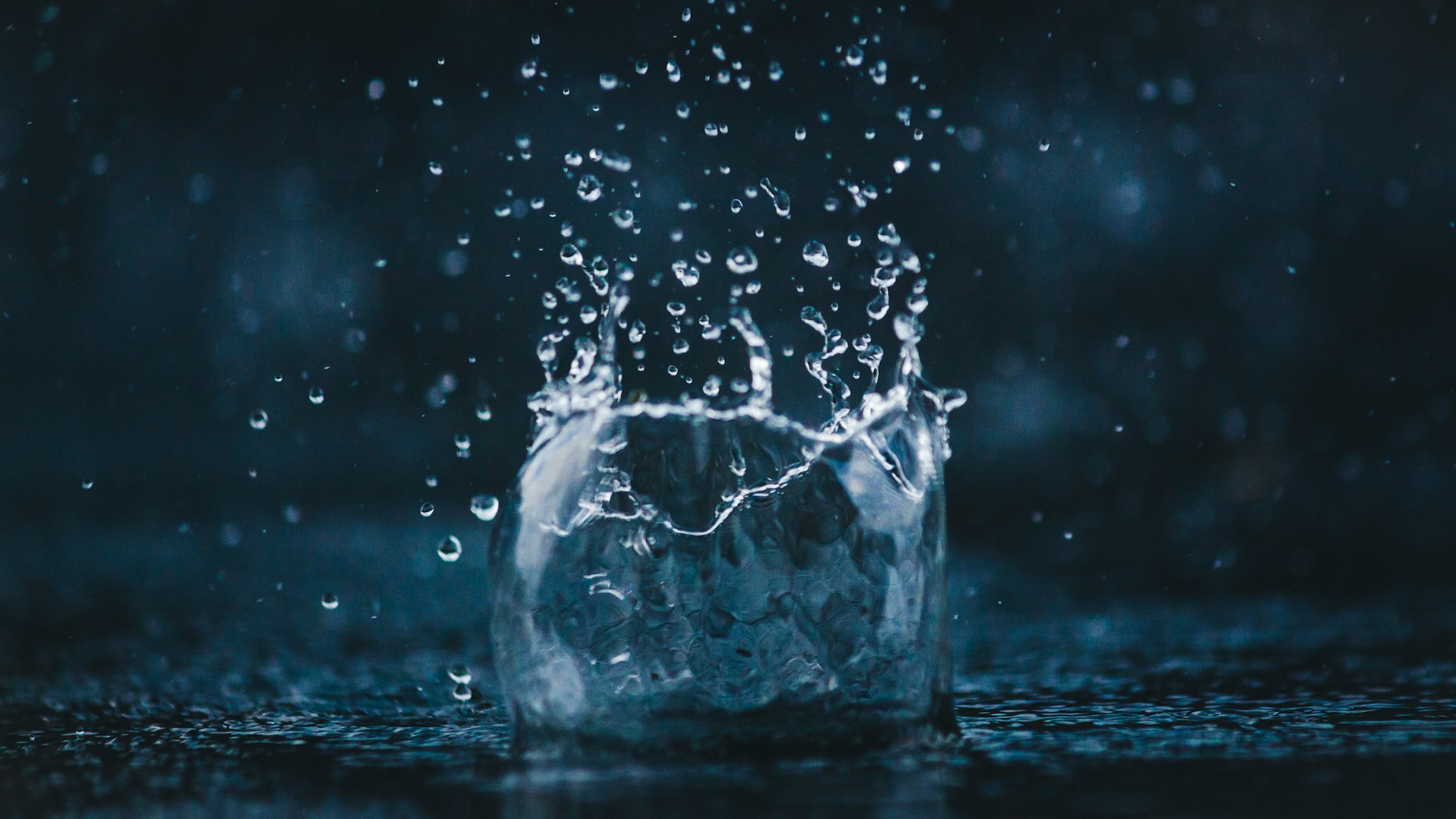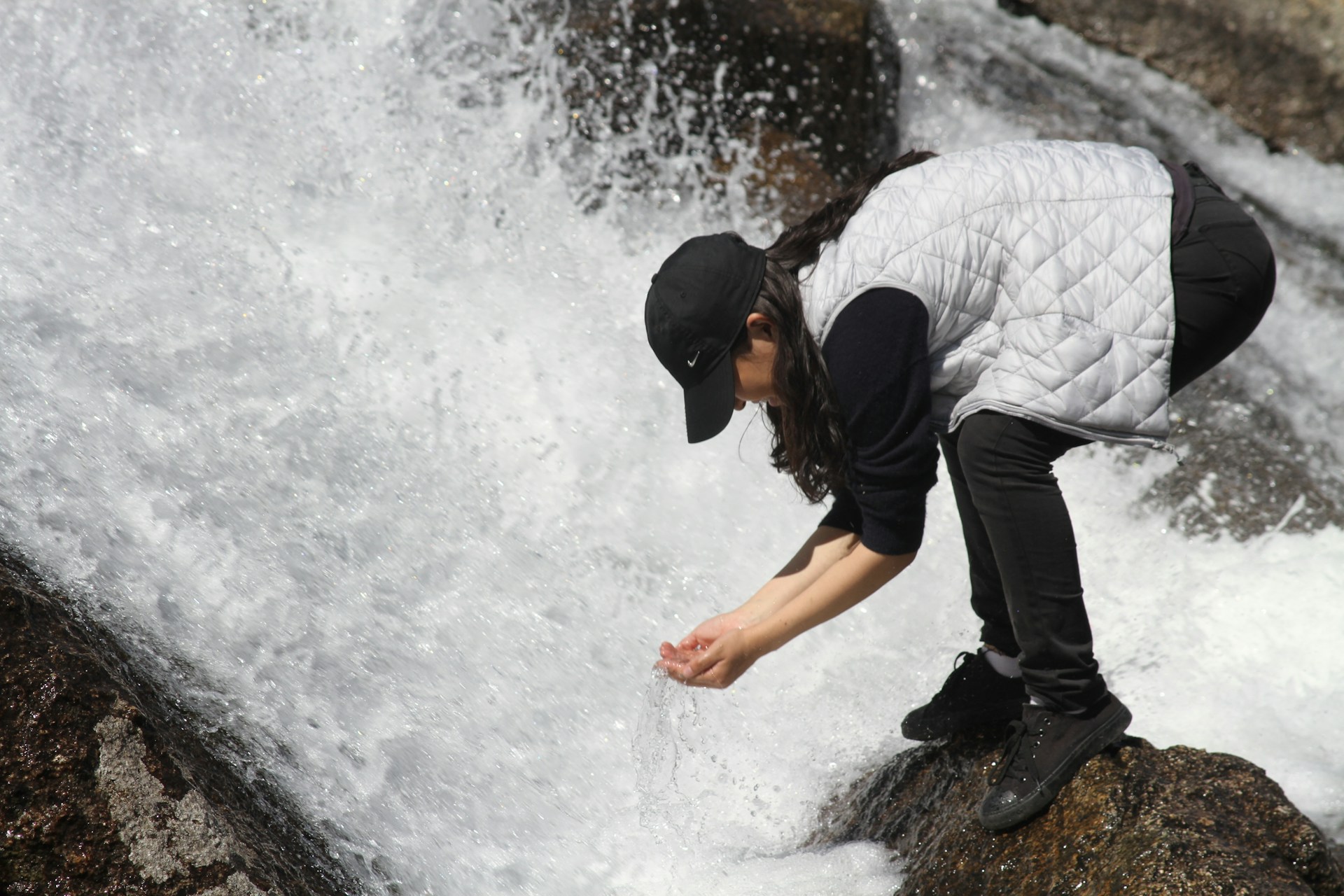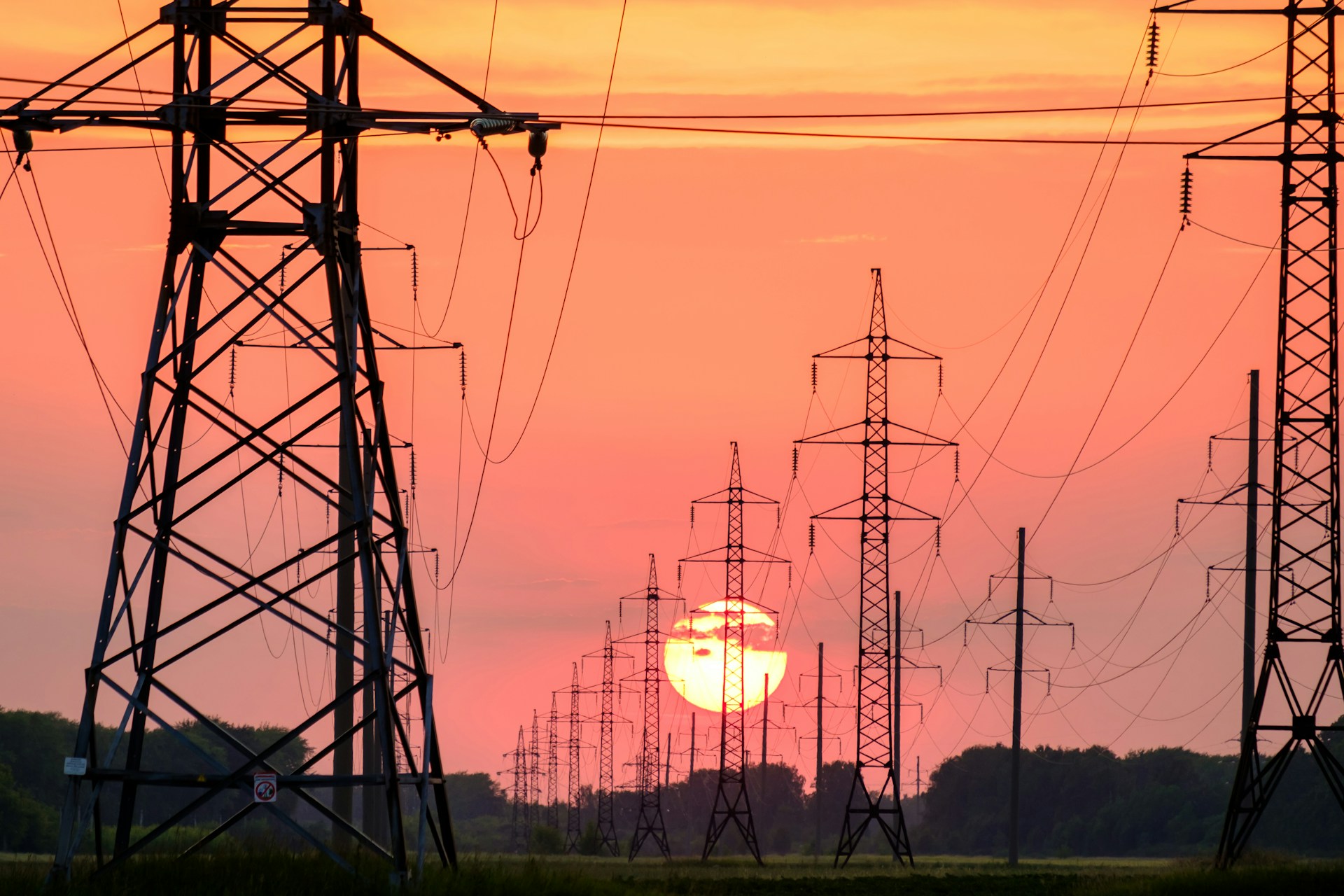Preparedness
Boost Your Land’s Resilience with This Ancient Water Technique

In the quest for self-sufficiency, especially when it comes to food production, finding sustainable methods to manage resources is crucial. One effective strategy is the construction of swales, which can significantly enhance the efficiency of your land by optimizing natural water resources.
Swales, although not a common term for many new to homesteading, have a rich history in land management. As Master Class describes, “Drainage swales are shallow ditches that blend in with surrounding landscape design, facilitate water management, and encourage natural irrigation.” These structures leverage the natural slopes of the land to direct water into the soil, preventing it from pooling on the surface or causing waterlogging.
The concept of swales is not new; they have been employed by farmers and gardeners for centuries, including the ancient Romans who used them for agricultural purposes. The appeal of swales lies in their self-sufficient and resilient nature, making them a favorite among homesteaders and hobby farmers.
Permaculture, as defined by Bill Mollison in 1978, emphasizes “The conscious design and maintenance of agriculturally productive systems which have the diversity, stability, and resilience of natural ecosystems.” Swales fit perfectly into this philosophy by integrating with the landscape to provide sustainable solutions for food, energy, and water needs.
Irrigation is a critical component of food production, yet it often requires significant time and financial investment. Swales offer a low-maintenance alternative by naturally collecting and distributing water throughout the soil, thus reducing the need for manual watering. They capture rainwater running down slopes, storing it in a basin, while a berm prevents it from flowing further downhill. This method allows for passive, continuous watering of your garden.
Brad Lancaster, in his book “Rainwater Harvesting for Drylands and Beyond,” emphasizes the importance of swales in water management. He states, “[Swales are one way to] practice the art of ‘waterspread,’ emphasizing the gentle harvesting, spreading, and infiltrating of water throughout a watershed rather than the rapid shedding or draining of water out of it.”
To avoid standing water, absorbent planting beds are placed along the swale. This setup enhances water absorption and raises the water table, reducing the frequency of watering needed. Swales also play a vital role in preventing soil erosion, which occurs when water carries away topsoil. By diverting water evenly across the landscape, swales help maintain the integrity of the soil.
Moreover, swales are instrumental in filtering pollutants from stormwater runoff. The City of Naples explains, “Today, swales not only convey stormwater but also help to treat runoff to reduce pollutants.” By slowing down the water, swales allow vegetation to filter out sediments and pollutants, enhancing the quality of water that seeps into the ground.
Swales also serve as fertile planting grounds. They can be designed to support various plants, with water-loving species thriving in the basin and nutrient-demanding plants flourishing on the berm. Once established, a swale becomes a self-sustaining ecosystem, continuously providing water and nutrients with minimal intervention.
If your property has areas prone to water pooling, constructing a swale can effectively redirect excess water, alleviating such issues. As Mark Shepard, author of “Restoration Agriculture,” suggests, “If every farm property captured and held all of its surface water, there would be no flash floods.”
Building a swale involves several steps, as outlined by Tenth Acre Farm. Begin by observing water flow on your property to identify wasted areas. Choose a suitable site away from buildings or steep slopes, preferably uphill from a garden or low-draining area. Mark the contour line every 6 feet, then dig a trench along this line, typically 6 inches to 1.5 feet deep and 18 inches to 2 feet wide.
Pile the soil from the trench on the downhill side to form a berm. After testing and adjusting the swale for optimal performance, plant perennials and other vegetation with thirsty roots. Consider overflow management for heavy rainfalls and aim to make the swale aesthetically pleasing, especially if you reside in a residential area.
By incorporating swales into your land management strategy, you not only enhance the sustainability of your property but also contribute to a more resilient ecosystem.
Let us know what you think, please share your thoughts in the comments below.

Off The Grid
What To Do When There’s No Water (And Everyone’s Panicking)

The Water Survival Guide: Finding, Filtering, and Storing the One Thing You Can’t Live Without
You can go weeks without food. Maybe months without sunlight. But go three days without water, and your body starts to shut down. In a real survival situation whether it’s a natural disaster, a grid failure, or getting lost outdoors clean water isn’t optional. It’s the first and most important thing you need to secure.
This guide breaks it down into something simple and doable: how to find, filter, and store safe drinking water anywhere.
1. Finding Water When There’s None in Sight
When the taps stop running, it’s time to think like nature. Start by looking downhill. Water always follows gravity. Watch for damp soil, thick green vegetation, or insect activity these are signs there’s water nearby.
If you’re outdoors, collect rainwater anytime you can. Lay out plastic sheets, ponchos, or even trash bags to funnel it into containers. In the morning, you can also gather condensation by wrapping a T-shirt or towel around grass or branches and wringing out the moisture.
In urban settings, drainpipes, water heaters, and toilet tanks (not the bowl) can provide clean, stored water in an emergency.
2. Filtering and Purifying
Finding water is only half the job making it safe is what keeps you alive. Clear-looking water can still contain bacteria, chemicals, or parasites. The rule of thumb: If you didn’t see it come out of a sealed bottle, purify it.
Here are the main ways:
- Boiling: The oldest and most effective method. Bring water to a rolling boil for at least one minute (three if you’re at high altitude).
- Bleach: Add 8 drops of regular, unscented bleach per gallon of water. Wait 30 minutes before drinking.
- Filters: Portable straw filters, gravity filters, or ceramic pumps remove most contaminants. Always follow up with chemical treatment if possible.
- Improvised options: Pour water through layers of cloth, sand, or charcoal to remove sediment before purification.
3. Storing Water for the Long Haul
Once you’ve got clean water, store it like it’s liquid gold. Use food-grade plastic containers, glass jugs, or heavy-duty bottles with tight seals. Keep them in a cool, dark place away from chemicals and direct sunlight.
A good goal is one gallon per person per day half for drinking, half for cooking and hygiene. Rotate your supply every six months to keep it fresh.
The “Clean Water Anywhere” Method
If you forget everything else, remember this three-step formula:
Find it. Clean it. Protect it.
Locate a source, purify it before you drink, and store it safely for when things get worse.
Final Thought
Water is the ultimate equalizer. It doesn’t care how strong, rich, or prepared you are without it, nothing else matters. Learn how to find and protect it now, before you ever have to. Because when the world runs dry, those who know how to stay hydrated will be the ones who stay alive.
Off The Grid
What Would You Do If the Grid Went Down Tomorrow?

How to Survive the First 24 Hours Without Electricity
Picture this: you wake up and nothing works. The lights don’t turn on. Your phone’s dead. The fridge hum is gone, and the tap only spits air. You check outside streetlights, silent houses, blank car alarms. It’s not just your house. The entire grid is down.
Sounds dramatic, right? But blackouts happen all the time, and most people are wildly unprepared for even a few hours without power. The key to surviving a real grid-down event isn’t stockpiling gadgets it’s knowing how to stay calm and use what you already have wisely.
Hour 1–3: Don’t Panic, Get Oriented
The first few hours are about awareness. Check your surroundings. Is it just your block or the entire city? Turn off and unplug major appliances to protect them from a surge when the power returns. Use your phone sparingly battery power becomes gold.
Start filling containers, bathtubs, and pots with water. When the grid fails, municipal pumps stop working fast. You’ll want every drop you can store.
Hour 4–8: Secure Light and Warmth
Once the sun starts dropping, light becomes your lifeline. Use flashlights, candles, or headlamps never burn open flames near flammable surfaces. If it’s cold, layer clothing and block drafts instead of wasting energy trying to heat a room. If it’s hot, stay hydrated and open shaded windows for airflow.
Now’s also the time to check on neighbors, especially anyone older or living alone. Community awareness is survival in disguise.
Hour 9–16: Protect Your Food and Water
Your fridge will stay cold for about four hours your freezer for about a day, if unopened. Group food together to preserve cold air and start eating perishables first. Keep bottled water handy, and if you have a gas or charcoal grill, that’s your new kitchen.
Stay inside if possible; confusion and panic can spread quickly outside when communication fails.
Hour 17–24: Rest and Reset
As night falls, light discipline matters. Too much brightness could attract attention if things get tense. Conserve power, stay quiet, and rest. Tomorrow, you’ll need clear thinking to find information, help, or supplies.
Grid-Down Checklist
✅ Store water before pressure drops
✅ Conserve phone battery
✅ Secure light and warmth
✅ Eat perishables first
✅ Check on neighbors
✅ Stay calm and rest
When the lights go out, the people who do best aren’t the ones with the most gear they’re the ones who keep their heads and think clearly. Preparation starts now, not when the power dies.
Nature and Wildlife
10 Survival Skills You Should Learn Before You Need Them

These Everyday Skills Could Save Your Life Or Someone Else’s
When an emergency hits, it’s too late to start Googling. Whether it’s a power outage, car breakdown, unexpected hike gone wrong, or full-scale disaster, knowing what to do before chaos strikes is the difference between staying calm and spiraling. The good news? You don’t need military training or a bug-out bunker. You just need to learn these 10 core survival skills ahead of time and they’ll serve you in everyday life too.
1. Fire-Starting Without a Lighter
Being able to start a fire in wet or windy conditions is a skill that spans thousands of years and it still matters. Learn to use a ferro rod, flint and steel, or even a magnifying glass. Practice with damp tinder, and always carry some dryer lint or cotton balls soaked in petroleum jelly.
2. Basic First Aid
Knowing how to stop bleeding, treat burns, or manage a broken bone is essential. Sign up for a CPR/first aid course you’ll gain life-saving knowledge and confidence. Bonus: it’s just as useful at a family BBQ as in a forest.
3. Navigation Without GPS
Batteries die. Satellites fail. Learn to read a paper map, use a compass, and find direction using the sun or stars. Even basic orienteering skills can get you out of a jam.
4. Knot-Tying for Real-World Use
The right knot can save your gear or your life. Know how to tie a bowline, square knot, and trucker’s hitch. These knots can help build shelter, secure loads, and make emergency repairs.
5. Water Purification and Collection
You can survive weeks without food but only 3 days without water. Learn how to boil, filter, or chemically treat water. Know where to find it in urban and wild environments, like rain catchment or condensation traps.
6. Shelter Building With Natural Materials
Even in a warm climate, exposure can be deadly. Practice building lean-tos, debris huts, or tarp shelters using branches, leaves, and cordage. A good shelter keeps you warm, dry, and protected from the elements.
7. Situational Awareness
Learn to scan your environment, trust your instincts, and notice small changes around you. Awareness prevents problems, whether it’s spotting a fire hazard, noticing someone following you, or avoiding dangerous terrain.
8. Cooking Without Electricity
Know how to cook over open flames, on a wood stove, or using solar ovens. It’s more than survival, it’s resilience. Start by learning to boil, grill, or bake without relying on modern conveniences.
9. Signaling for Help
If you’re stuck, you’ll need to be found. Learn how to use mirrors, flares, whistles, or even create large ground signals like “SOS” using rocks or logs. Understanding rescue priorities can make you easier to spot and faster to save.
10. Mental Resilience and Problem Solving
This is the quiet skill that holds it all together. Practice staying calm under pressure through breath control, visualization, or even journaling. In any crisis, your mindset determines whether you freeze… or adapt.
🧭 Final Thought
The best time to learn these survival skills is when you don’t need them. They aren’t just about extreme situations they teach self-reliance, confidence, and control. The more you know, the less you fear and the better prepared you’ll be when life throws the unexpected your way.
-

 Tactical2 years ago
Tactical2 years ago70-Year-Old Fends Off Intruder with Lead-Powered Message
-

 Tactical2 years ago
Tactical2 years agoVape Shop Employee Confronts Armed Crooks, Sends Them Running
-

 Preparedness1 year ago
Preparedness1 year agoEx-Ballerina’s Guilty Verdict Sends Tremors Through Gun-Owner Community
-

 Preparedness1 year ago
Preparedness1 year agoGood Samaritan Saves Trooper in Harrowing Interstate Confrontation
-

 Off The Grid7 days ago
Off The Grid7 days ago10 Foods That Could Save Your Life When Grocery Shelves Are Empty
-

 Tactical2 years ago
Tactical2 years agoMidnight SUV Theft Interrupted by Armed Homeowner’s Retaliation
-

 Survival Stories2 years ago
Survival Stories2 years agoEmily’s 30-Day Experience of Being Stranded on a Desert Island
-

 Preparedness1 year ago
Preparedness1 year agoArizona Engineer’s Headless Body Found in Desert: Friend Charged
Carol
September 17, 2025 at 11:39 am
The old Italian man we bought our fatm from had installed swales to control waterflow and they work! That was 40 yeats ago. They are still in place and continue to wotk efficiently.